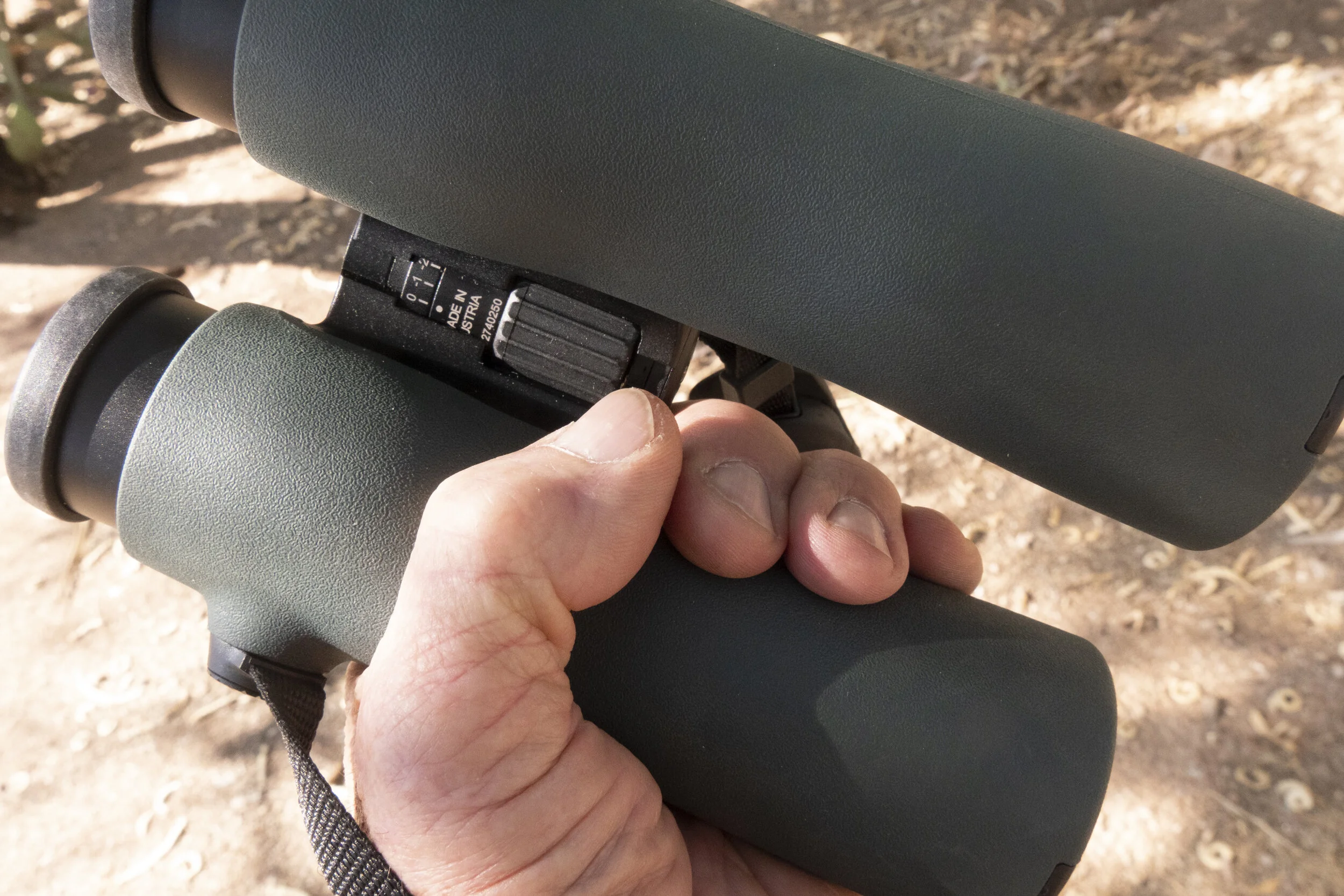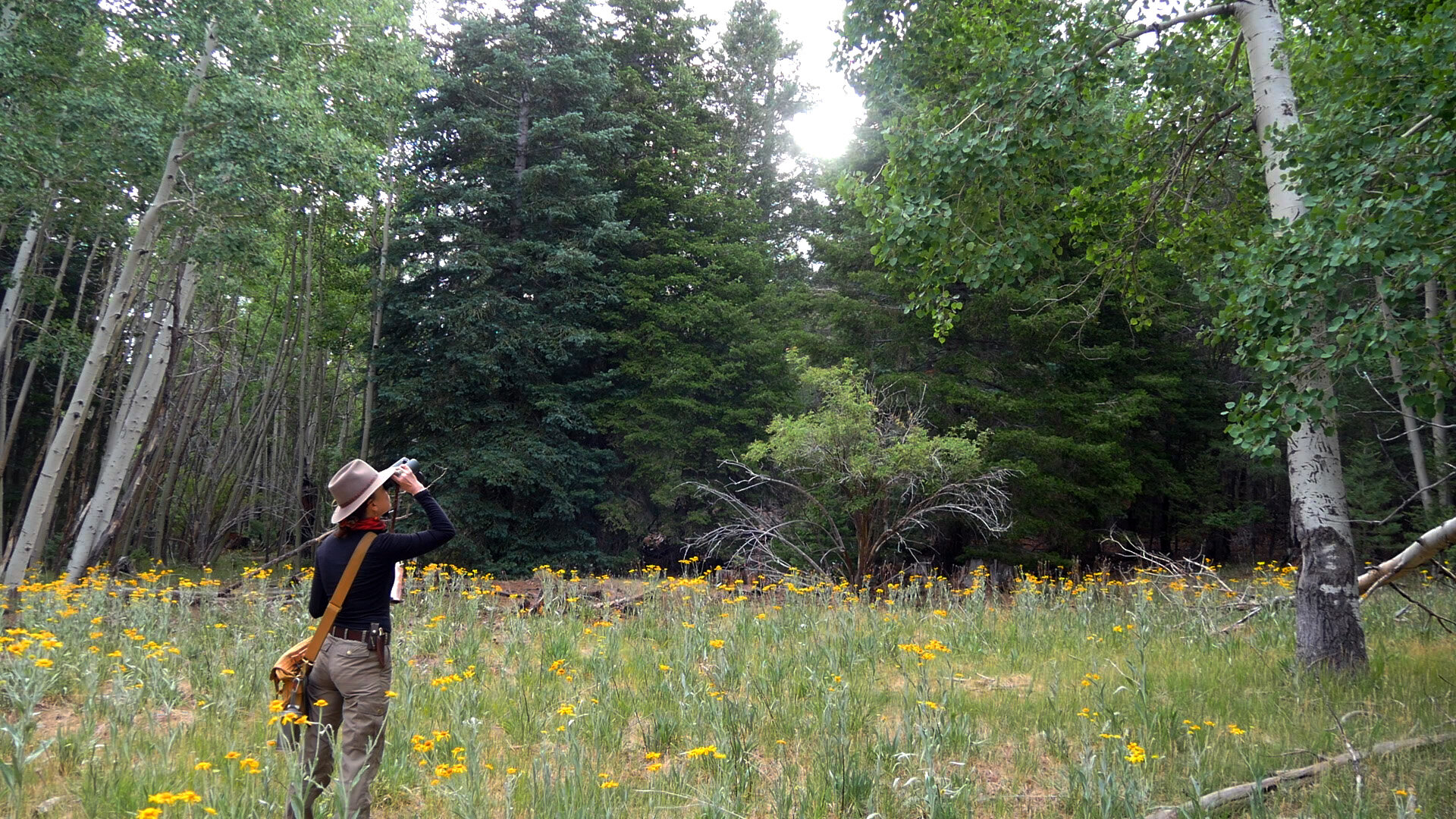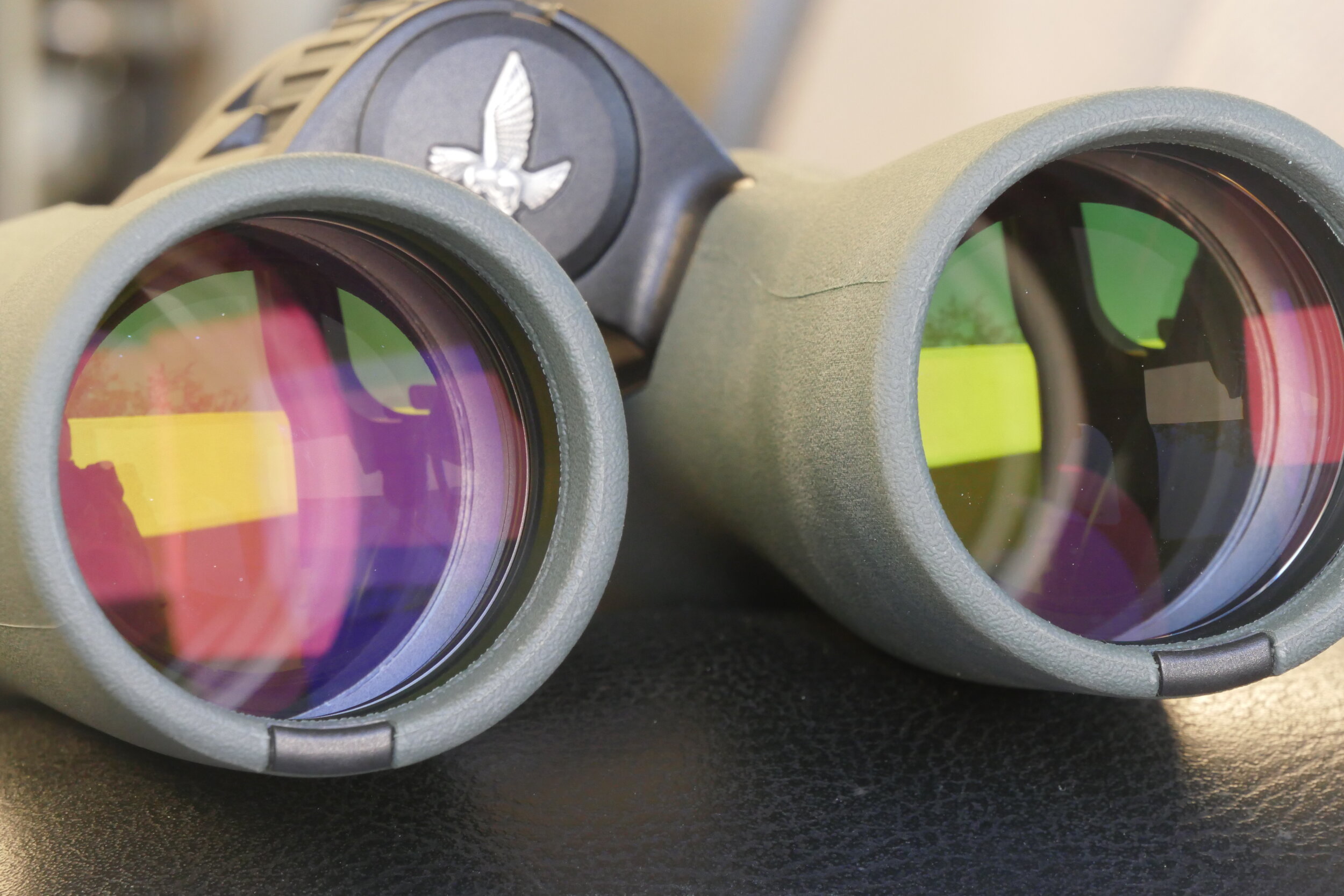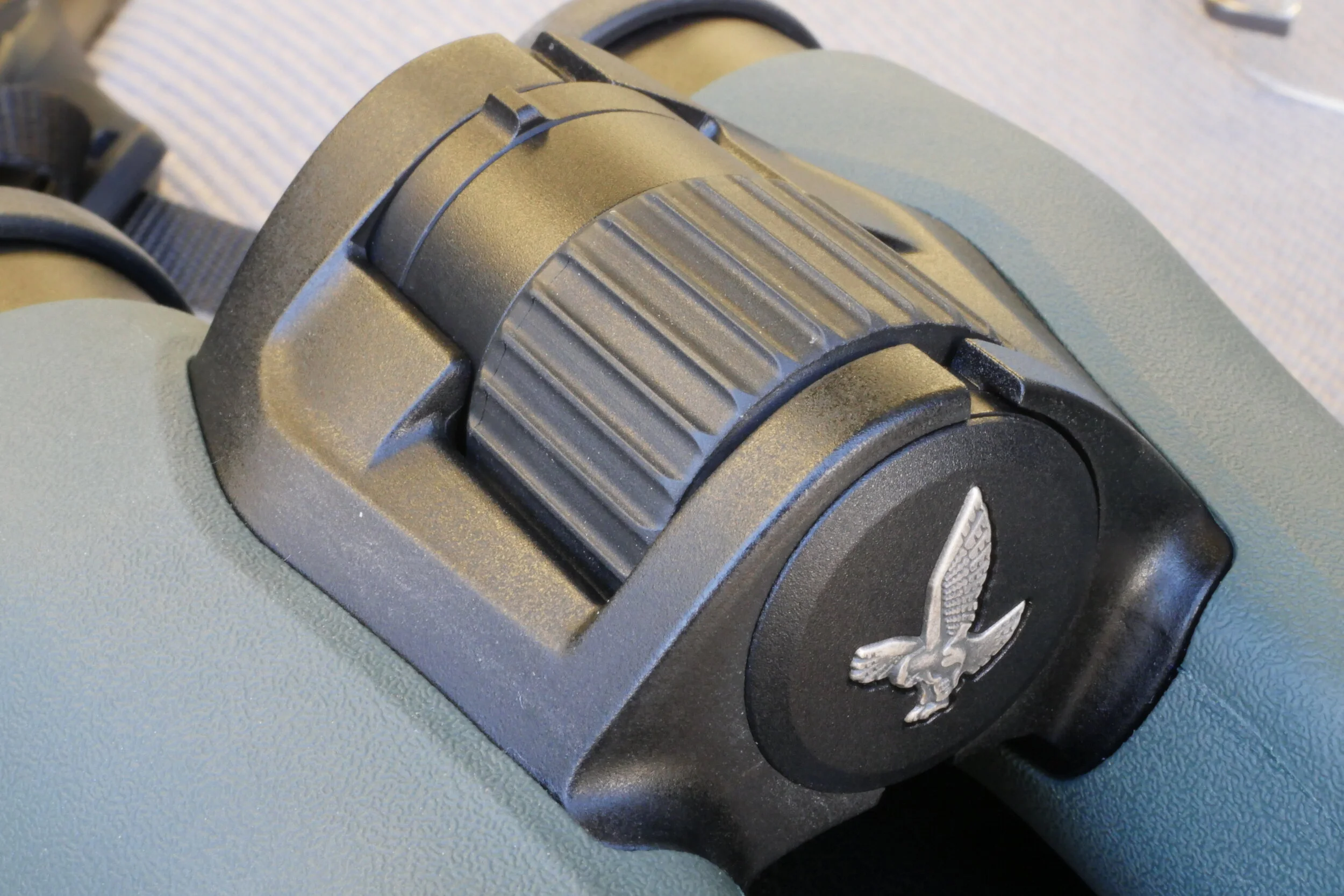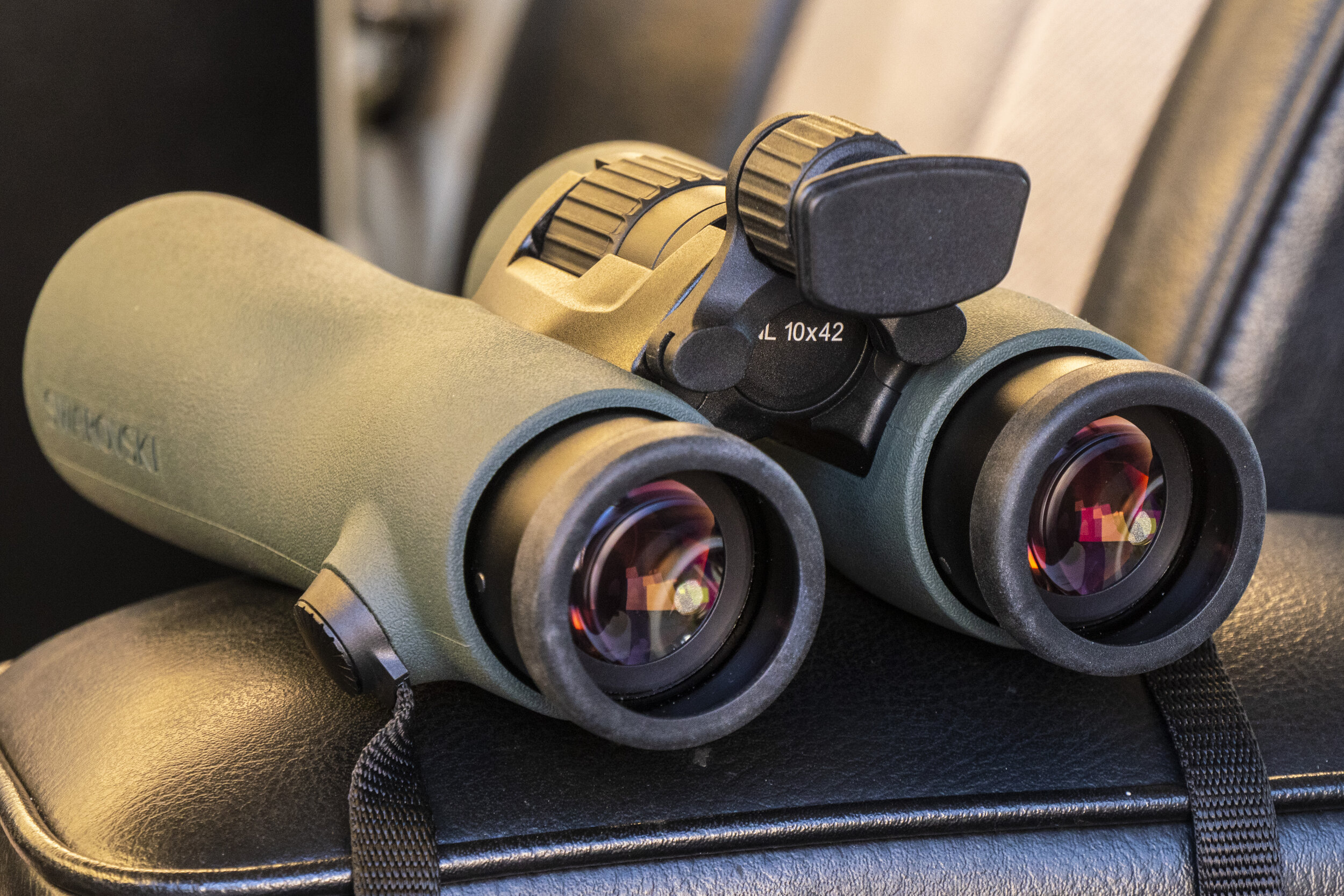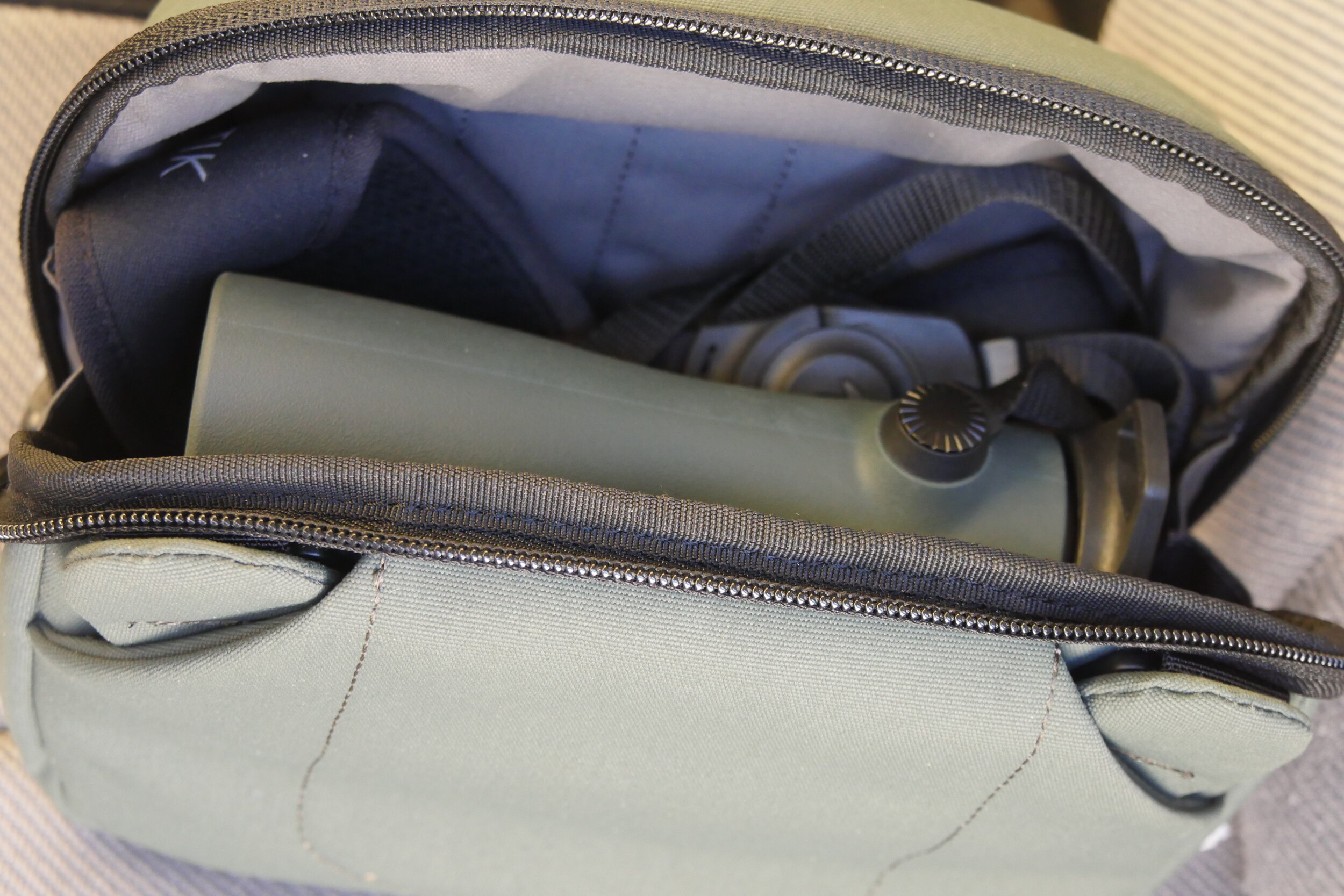Swarovski NL Pure binoculars . . . a new paradigm?
One of my favorite binocular interactions took place when Roseann and I were caretakers in Brown Canyon, in the Baboquivari Mountains about 50 miles southwest of Tucson.
Among our duties was leading hiking and birding tours along the canyon’s sycamore-lined creek.
After we’d taken one group up to a natural arch on a morning walk, we all gathered on the big shaded porch of the caretakers’ house to have lunch and look at birds on our feeders and in the trees. At the time I was using Leica BN 10 x 42s, one of the best two or three of its type in the world, and one of the guests was an amiable but crusty older fellow who had spent much of the hike teasing me about the fact that his binoculars cost less than a fifth of what mine had.
Now he came and stood by me while we both leaned on the porch rail and scanned the trees, and started right in again.
“I’m sure they’re great and all, but mine do just fine. I just don’t see how those can be worth the money.” I had mostly smiled and shrugged up to this point, biding my time.
Soon, though, he spotted something and said, “Kestrel in the big dead tree on the other side of the creek. Can’t tell if it’s male or female. (Male kestrels are most easily identified by their blue-gray shoulders.)
I looked through the Leicas and said, “Male.”
He eyed me dubiously. So I took off the Leicas and held them out.
He accepted them with an exaggerated show of care and looped the strap around his neck. He looked through them toward the tree, adjusted the bridge to fit his face, looked again. He pulled them down and looked at me, then looked through them again. He did a slow sweep of the canyon, looked up at the top of the ridge, looked down at the blue-throated hummingbird at one of the feeders. Finally he pulled them off and held them out to me, and with a deep, shuddering, what-have-you-done-to-me sigh, said, “Okay. I can see how they’re worth the money.”
Let’s be honest: Not everyone needs a binocular that costs as much as a decent used car. (Side note here: I bounce back and forth randomly between referring correctly to the instrument in question as “a binocular,” and referring to it in the vernacular as “a pair of binoculars,” which of course it really isn’t.)
As a natural-history writer, guide, birder, and hunter I’ve always felt justified in spending whatever it took to carry the best optics, just as an auto mechanic might justify Snap-on tools, or a graphics designer an 18-core iMac Pro. But let’s continue the honesty: Many people, including me, unapologetically derive great satisfaction and joy from using the best of whatever equipment they employ, whether or not it might be a deductible expense. I can justify high-end optics, but in the end I simply enjoy them, and never tire of the sharp intake of breath I experience every time I magically bring a bird or a whale or a distant landmark or a Ferrari on a race track ten times closer.
The stratospheric upper echelon of binocular performance is a battleground in which three manufacturers, and sometimes a fourth, fight for dominance with instruments that are in every sense pinnacle products. These manufacturers—Leica, Swarovski, Zeiss, and occasionally Nikon when the company is feeling feisty—spare no expense to make their flagship product as perfect as it can possibly be, and damn the cost. The best glass, coatings, and prism designs to produce the brightest, sharpest image; the strongest and lightest materials to gain supreme durability, weatherproofness, and comfortable long-session viewing; and the latest technology to stay abreast or incrementally ahead of the current competition’s best.
Thanks to that, “Hey, I’m a pro, I need the best” justification, plus the opportunity to review binoculars a couple dozen times over the years, plus just general binocular geekness (I own . . . several . . . including a Zeiss 10 x 40 BGAT from West Germany, arguably the very first ultra-premium binocular), I feel competent to judge differences in high-end binoculars sometimes measured in a percentage point of light-gathering ability, or a molecule-wide fringe of chromatic aberration, or a couple of feet of field of view, or an ergonomic detail unnoticeable unless you’d had the instrument to your eyes for a solid half hour. For at least the last decade it was only such minute variations that defined the differences among the big three and the notion of which one among a transcendent group was “best.”
Until last month, that is—when Swarovski introduced their entirely new NL Pure line of roof-prism binoculars, in 8 x 42, 10 x 42, and 12 x 42.
I have a connection to Swarovski that goes back to the 1980s, when I bought a pair of their Habicht 10 x 50 porro prism binoculars, magnificent and bulky beasts that I used while guiding sea kayak trips in Mexico, simply strapping them down on the deck of my boat where waves frequently washed over them. They performed flawlessly for a decade until I decided to move to a more compact roof-prism instrument, at which point I sold the Swarovskis for more than I had paid for them.
My current binocular is a Swarovski 10 x 42 EL, a brilliant instrument built in the double-bridge style the big three adopted for their top-end products a few years ago. To get a feel for how good these things are, go outside and look at a car or tree a hundred feet from you, then walk up until you are ten feet from it. That’s what the view is like through the ELs—the world is simply ten times closer. The only things less than perfect about the ELs (for me) is that the molded-in thumb grooves don’t quite match where I put my thumbs—obviously a personal-fit issue—and the fact that the big focus wheel sits slightly behind the neck strap lugs. I like to keep two fingers on the focus wheel because I’ve developed a technique of “walking” my index and middle finger rapidly across the wheel to go instantly from close to far focus, and on this binocular the strap lugs lightly dig into my hands when I do this.
When I pulled the new NL Pure 10 x 42s out of the box, it was apparent the ergonomics were going to be in a different league. The optical tubes of the single-bridge design (which I prefer, although strictly for aesthetics) were markedly constricted in the center, giving the binocular an elegant wasp-waisted look. More important, that constriction made the NLs the easiest full-size binoculars to hold I’ve ever used, even one-handed.
It’s easy to get a full wrap on the narrow barrel
I’m told the engineers accomplished this through the why-didn’t-someone-think-of-this-before strategy of rotating the binocular’s Schmidt-Pecan roof prisms, but I haven’t yet seen an internal view of the optics so I don’t know if any other tricks were employed. In any case, when I tried the NLs I was immediately convinced they were lighter than the ELs—not so, they’re actually a few grams heavier but don’t feel it.
One-handed use is easy with the NL Pure
The focus wheel was another pleasant surprise—it’s now in front of the strap lugs and falls perfectly to hand, or finger as it were. I can finger-walk the Pures from their excellent close focus of just 6.6 feet out to infinity in a couple of seconds.
Focus wheel is perfectly positioned
But ergonomics were almost secondary to the real news. The NL Pure introductory video promised a new high water mark in the field of view for full-size binoculars, and that was an understatement. In the past one brand or another would boast of a field of view three or four feet wider than its competitors at 1,000 yards. I’d have to look through one, rolling my eyes back and forth, then through the other, doing the same, before finally concluding, yep, a bit of difference.
Optics transmit 91 percent of available light. The black inserts can be swapped out for hinged objective-lens covers for those who prefer them.
Not the Pures. I looked through my Leica 10 x 42 Ultravids, then through the NL Pures, and wham. The difference was stunning: 336 feet to a horizon-spanning 399. I looked through my own Swarovski 10 x 42 ELs—until now the company’s top of the line product—and then the NL Pures, and wham. Same difference. The field of view of the 10 x 42 Pures is the wide as the company’s 8.5 x 42 ELs. The only binocular I’m aware of that comes close to the field-of-view performance of the NL Pure is the Zeiss Victory 10 x 42, at 394 feet.
The challenge with providing such a wide field of view is maintaining sharpness all the way out to the edges of the field. The wider the field, the harder that is to do, and the greater likelihood of distortion and chromatic aberration as well. As near as I could tell, the Pures maintain sharpness and color to the edge of their 399-foot vew as well as the ELs do to their 336-foot view—that is, superbly.
Diopter adjustment is on a toggle behind the focus knob
So far, so spectacular. But along with the NL Pures the company sent a new (extra-cost) option: the FRP, (for Forehead Rest Pure, I think). And I have to be honest, when I saw this device for the first time I laughed out loud. It reminded me instantly of the Optigrab, Steve Martin’s ill-fated eyeglass accessory from The Jerk.
Not a gimmick. Really.
The forehead rest is exactly what it says—a small, adjustable pad that plugs into the bridge of the binocular after removing two screws. A dial moves it in and out to achieve gentle but solid pressure on your forehead to help stabilize the view—a problem for some people using 10-power binoculars, and probably a problem for most people using the NL 12-power instrument.
So, in the interest of due diligence, I removed the two little screws, plugged in the Optigr . . . I mean forehead rest, and went outside to try it.
And. Well. Dammit . . . the thing actually works. I’m very steady with 10-power binoculars, but using them with and without the rest I could beyond any doubt feel the difference—and trust me, I didn’t want to feel a difference. I instantly knew of a situation where this device would be a huge advantage for me: When I hunt deer or elk I normally do what is called, illogically, still hunting, which involves moving slowly through habitat and stopping frequently to glass. I always do this one-handed, keeping my other hand on the rifle. And the Pure forehead rest dramatically increased stability when I held the binoculars one-handed. (I often do this when hiking and looking for birds, too, come to think of it. And Roseann does it all the time while sketching.) Suffice to say the FRP works as advertised.
Even the NL Pure soft case is innovative. It opens sideways like a clamshell and the binocular lays in on its side. It’s far easier to access and store them than in the traditional vertical case. Well done Swarovski for rethinking something so mundane.
Quibbles? Okay: The strap incorporates a clever way to adjust its length instantly, but it leaves tails of strap flopping around. Since these weren’t mine I did not try simply cutting them off shorter . . .
Ergonomics, clarity, field of view. For the first time in years, I found a new premium binocular model to be a big leap from its predecessor, and a leap ahead of its competition. If you can justify the expense, you’ll find The Swarovski NL Pure worth every penny. If you can’t justify it, maybe consider a career change?
Swarovski is here.



